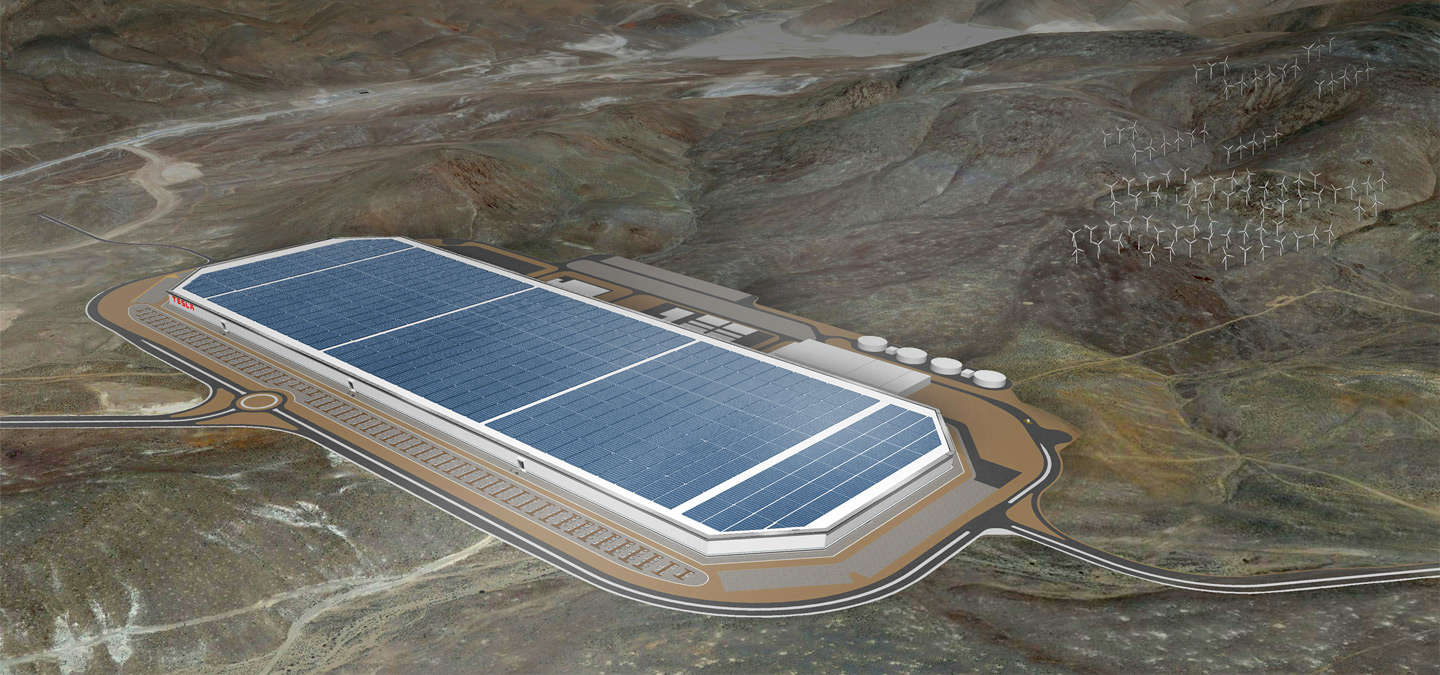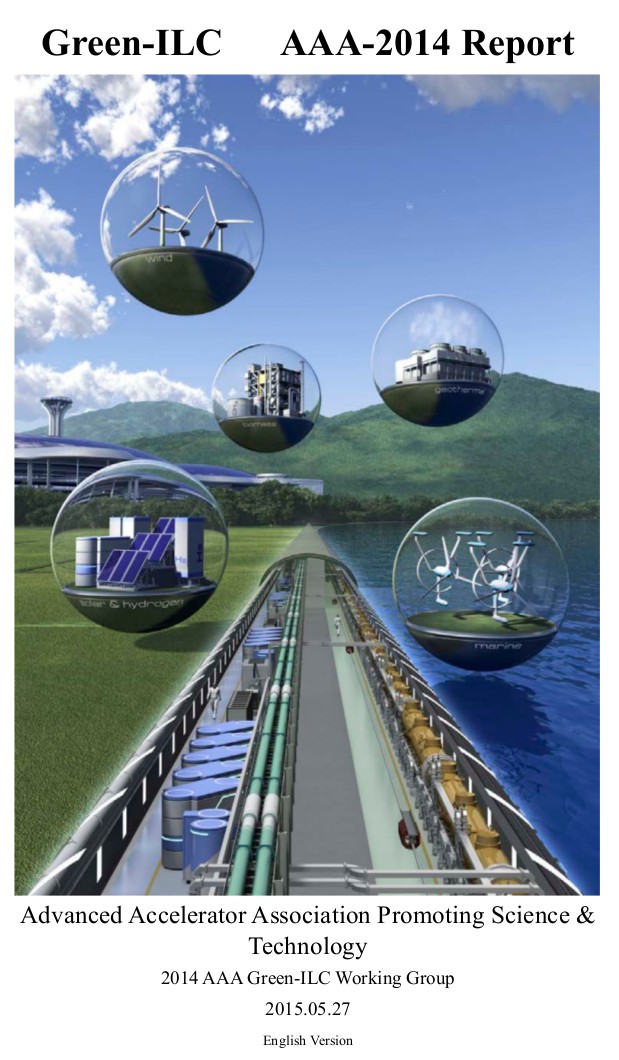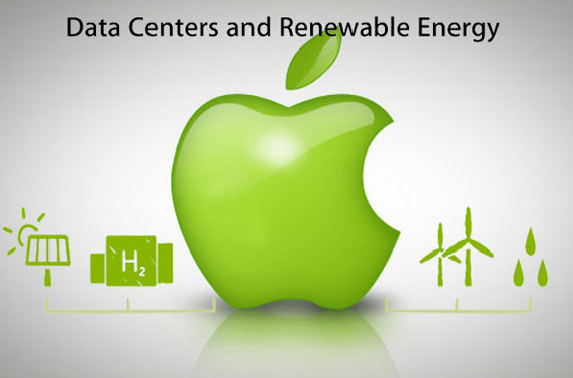 One of the take-home messages from the last LCWS 2017 (International
Workshop on Future Linear Colliders), held in Strasbourg (Oct. 23-27, 2017)
is the amazing progress made towards reducing colliders energy consumption.
One of the take-home messages from the last LCWS 2017 (International
Workshop on Future Linear Colliders), held in Strasbourg (Oct. 23-27, 2017)
is the amazing progress made towards reducing colliders energy consumption.
Tesla Gigafactory Power Supply: Almost Half ILC Needs
 Tesla and Panasonic are investing $5 billion in the world wide largest battery factory (actually the biggest factory of any kind): the Gigafactory. When finished, in a couple of years, it will offer ~1/2 million m2 of working space under a single roof covered by solar panels. The batteries are meant to equip the 500,000 cars Tesla CEO, Elon Musk, intends to produce every year.
January 4th, 2017, the first 30% of the factory was inaugurated and the battery production started.
Tesla and Panasonic are investing $5 billion in the world wide largest battery factory (actually the biggest factory of any kind): the Gigafactory. When finished, in a couple of years, it will offer ~1/2 million m2 of working space under a single roof covered by solar panels. The batteries are meant to equip the 500,000 cars Tesla CEO, Elon Musk, intends to produce every year.
January 4th, 2017, the first 30% of the factory was inaugurated and the battery production started.
ICFA: A New Panel on Sustainable Accelerators-Colliders
Green Particle Physics at the IEEE Conference
 At the recent IEEE Nuclear Science Symposium and Medical Imaging Conference (IEEE NSS/MIC 2016) held in Strasbourg (Oct. 29 to Nov. 5), a special session was dedicated to the particle accelerators energy consumption issues.
The “Green Particle Physics” session included talks related to ILC, ESS and from companies such as Mitsubishi Heavy Industry, Kyocera, and Fujikura.
The slides of the Green-ILC group are available from the Green-ILC website or here and here
At the recent IEEE Nuclear Science Symposium and Medical Imaging Conference (IEEE NSS/MIC 2016) held in Strasbourg (Oct. 29 to Nov. 5), a special session was dedicated to the particle accelerators energy consumption issues.
The “Green Particle Physics” session included talks related to ILC, ESS and from companies such as Mitsubishi Heavy Industry, Kyocera, and Fujikura.
The slides of the Green-ILC group are available from the Green-ILC website or here and here
The round table showed a close proximity between the ESS and Green-ILC projects on energy consumption issues.
CLIC Trimming Energy Consumption
 The CLIC (Compact Linear International Collider) held its yearly workshop (Jan. 18-22 2016) at CERN (timetable). Its scope was clearly set:
The CLIC (Compact Linear International Collider) held its yearly workshop (Jan. 18-22 2016) at CERN (timetable). Its scope was clearly set:
The CLIC workshop 2016 covers Accelerator as well as the Detector and Physics studies, with its present status and program for the coming years.
Some talks were covering the CLIC electrical power consumption (272 MW) which is 65% larger than ILC at 500 GeV (164 MW). The CLIC teams have made important efforts to decrease the wall-plug AC power figures by increasing the klystron efficiency and zeroing the NC magnets consumption through the use of permanent magnet. These achievements were quite impressive.
Green-ILC Report Published

The Technical Group of the Advanced Accelerator Association Promoting Science and Technology (AAA) has set up the Green ILC working group (G-ILC) with the fact-finding mission to bring energy-saving technologies to the ILC.
The G-ILC working-group has organized in 2014/2015 many meetings gathering industry representatives and scientists. The Green-ILC Report (2014/2015) is the collection of the various talks presented during these meetings.
- Green-ILC AAA 2016 full report (100 MB)
By Chapter:
- Contents and Introduction (.3MB)
- Green Technologie trends and application to accelerators (21 MB)
- Energy saving Technologies for accelerators (25 MB)
- Energy Recovery, Energy storage, Energy Managment(29 MB)
- Renewable Energies for accelerators (36 MB)
SESAME Needs Sun to Grow
 SESAME which stands for “Synchrotron-light for Experimental Science and applications in the Middle East” is
SESAME which stands for “Synchrotron-light for Experimental Science and applications in the Middle East” is
a “third-generation” synchrotron light source under construction in Allan (Jordan). It will be the Middle East’s first major international research centre.
Sir Chris Llewellyn Smith, Director of Energy Research Oxford, President of the SESAME Council and former Director General of CERN has presented a series of very well documented seminars entitled The Outlook for Energy Supply and Demand at CERN mid September 2015. In the Q&A, he did mention that the SESAME project faces a serious running cost issue due to a very high electricity price in Allan. Grid alternative like solar power plant to cover the energy needs for this emblematic project are currently being considered.
Apple Inc. and Others: Renewable Energy, a Good Deal

Many wall-street companies are investing on renewable energy. Tim Cook, Apple Inc. CEO was recently reported by BloombergBusiness saying:
Apple isn’t investing in solar as a gift to humanity. It’s doing it because it’s a good business deal, Cook stressed at the Goldman Sachs conference. “We expect to have very significant savings.”
and with Apple many other companies are investing in renewable energy because it is more profitable.
If investing in renewable energies is profitable for companies and their stockholders, that should also be profitable for ILC and for other Knowledge factories. 
ESS: Agreements Could Bring Considerable Energy Savings →

Overview of the planned research facility European Spallation Source as well as Science Village Scandinavia and the synchrotron facility MAX IV Laboratory.
The European Spallation Source (ESS) project is pioneering in the domain of sustainable high intensity proton linac. In January 20, 2015, it was announced that two agreements have been signed in Sept 2014 with the expectation of 10-20% energy saving.
ILC Inspires Innovation
The power consumption of particle accelerators and colliders has become a serious issue. Delivering larger beam energy or beam intensity implies using larger electrical power. The yearly consumption of CERN when the high energy research collider LHC is running reaches figure similar to a city of 250-300,000 people.
The future of accelerator physics, both for the high energy and the high intensity sectors, is at stake. Most researchers assume that the power “glass ceiling” is at the level of 300 MW, which will be nearly reached after the high luminosity LHC upgrade. Beyond that, the social, the financial and, even, the technological acceptance is questionable.
